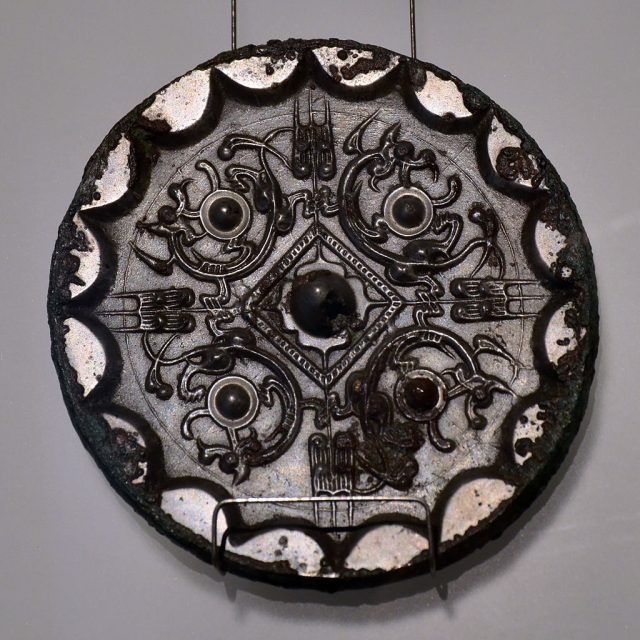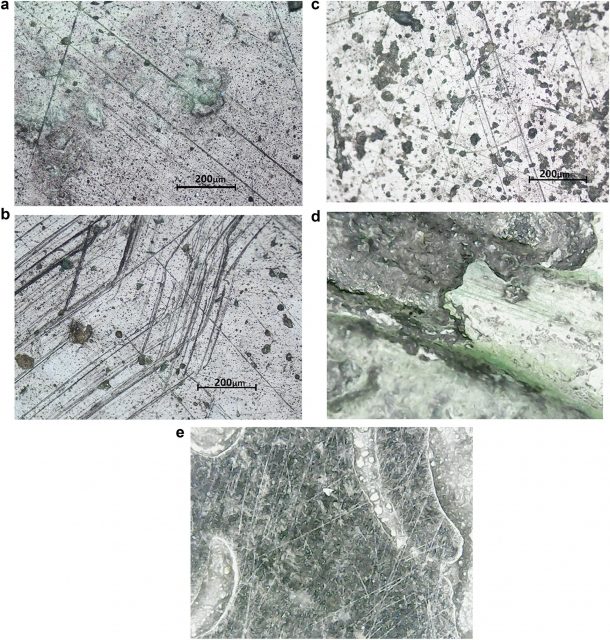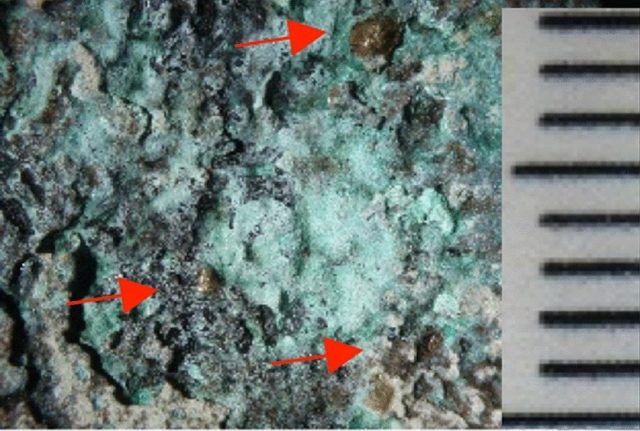A range of mirrors from the Han Dynasty have been found in an ancient Chinese cemetery. And some of these artifacts reflect the craftsmanship of the time… quite literally!
The condition is so good that archaeologists can see their faces on the surface. Dating back 2,000 years, the mirrors were recently uncovered as part of an ongoing excavation at Dabaozi Cemetery in the north west.
The smallest is approx 3 ins and the largest 8 ins. CGTN (China Global Television Network)’s coverage notes that more than one method was used, explaining the varying sizes.
A lot of skill was required to make the mirrors, numbering around 80. Starting with a clay mold cast, the bronze was applied and then polished to an immaculate standard. In terms of design, there’s a mirrored side with an intricate design on the back.

In this case, the clay was moulded to incorporate “original details such as clouds and ancient Chinese characters” (via the Daily Mail). Also noticeable are wishful inscriptions. Examples include “jia chang fu gui”, or “home of prosperity.”
In order to have a prosperous home, an individual surely needed wealth. Experts assume the mirrors were part of a grand burial plan for the Han Dynasty elite.
Smithsonian Magazine – writing about a report from news agency Xinhua – states that Han Dynasty founder Liu Bang “created a residence for members of the nobility near the cemetery to aid the construction and servicing of the imperial mausoleum.”
The positioning of the mirrors appears significant. Placed near the head and upper body sections of assorted skeletons, both male and female, the artifacts possibly symbolize the natural reflective surface of a lake or pond. This idea comes from modern scholar Jiafang Liang, as reported by the Mail.
They refer to a recent study published on Heritage Science by Liang and colleague Quentin Parker from the University of Hong Kong.
Liang and Parker undertook a examination of 4 mirrors. The team write that their goal was to demonstrate what could be achieved using forensic technology on these artifacts. Much emphasis is placed on “archaeological context” but the experts wanted to rely on forensics.
As described in the piece, the likes of surface microscopy, ultraviolet radiation examination and infrared spectroscopic analysis were employed as part of a comprehensive approach. By doing this, the authors aimed to provide useful information for research going forward.
Various outlets state the oldest known Chinese mirror goes back to the Qijia culture, from Neolithic times (some 4,000 years past). The Mail writes that production of mirrors seriously picked up during the Han Dynasty (206 BC – 220 AD).

With over 400 tombs at Dabaozi Cemetery, and months of work under their belts, the Shaanxi Provincial Institute of Archaeology have made some fascinating finds on site. These include approx 300 fragments of copper and jade, as reported by Smithsonian Magazine.
CGTN write that the cemetery encompasses what’s known as the late Warring States Period (475 – 221 BC) to the Western Han Dynasty of 202 BC – 8 AD.
Smithsonian Magazine details the eye-opening history behind the Han Dynasty. Established by Liu Bang, who rose from the status of peasant to ruler of China, it’s famous for its creative and practical legacy.

The Mail writes that everything from medicinal cures to artistic masterpieces were produced during this pioneering period. One of its lasting contributions to the world is paper. Cai Lun is believed to be responsible for producing the first examples in 105 AD.
What was it made from? Reportedly a combination of rice straw and tree bark. And if readers may be thinking that it took balls to realize such an innovation, then guess again… Cai Lun was a eunuch.
Another Article From Us: What’s Up, Doc? World’s Biggest Rabbit Stolen
Mirrors are often associated with people’s vanity. So it’s refreshing to change perspectives, going through the looking glass to explore a rich and surprising history…
